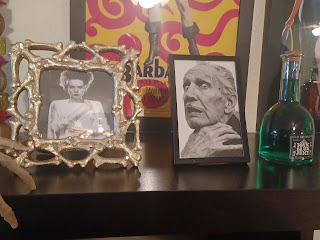Merry Christmas everyone! Now in theaters:
The Boys in the Boat--The 1936 Berlin Olympics was a highly satisfying episode for the good guys. Most famously, when Der Fuehrer said his was the Master Race, Jesse Owens heiled (phfft!) heiled (phfft!) right in Der Fuehrer's face. It wasn't enough to prevent the war that was coming, but it was a great foreshadowing of who would win.
Yet alongside that glorious debunking of supposed Aryan racial superiority, right under the noses of its promulgators, was another splendid underdog story. Briefly played by Jyuddah Jaymes, Owens is a minor figure in this period spectacle about the improbable rise of the University of Washington's eight-man crew to compete for the U.S. in those same games. It's directed by George Clooney from a script by Mark L. Smith, based on Daniel James Brown's 2013 book.
The story was remarkable before the crew got to Berlin. The UW boys were already upstarts in the sport, long associated with elite, affluent Eastern schools. This crew included working class, Depression-era grunts; the focus here is on Joe Rantz (Callum Turner), who when we first meet him is literally homeless. He lives in a junked car in a Seattle hobo jungle, patching the holes in the soles of his shoes while trying to eke out an engineering degree. He joins the crew for the stipend and the roof over his head.
"Eight-man crew is the most difficult of all team sports," the coach here pronounces to the aspirants. "The average human body is just not meant for such things." I once had occasion to learn first-hand that my below-average human body wasn't meant for such things. Two of my nieces rowed crew, and back in the '80s I myself had the opportunity to take a one-man shell out onto the Potomac River; my near-helplessness in managing to get the thing to go anywhere gave me a small taste of how much delicate skill the sport requires, even setting aside its physical demands.
The Boys in the Boat gets across hints of this subtle precision; Clooney shows us, for instance, the hiccup-y little wrist-flip that precedes the return stroke. There's a great deal to like about the film, really, starting with what a wonderful, heartening story it tells. It's handsomely produced, with lustrous cinematography by Martin Ruhe, crisp editing by Tanya M. Swerling, another lovely score by Alexander Desplat. And it has rich, sometimes fascinating period detail, like the swanky spectator trains that run along the river banks at the fancier courses.
But as with several of Clooney's earlier directorial efforts, this movie is well-made, well-intentioned, good-hearted and generally enjoyable without being entirely satisfying. And unlike, say, The Monuments Men or The Tender Bar, it doesn't even have vivid star character actors to liven things up.
Joel Edgerton as Coach Al Ulbrickson and Peter Guinness as master boat-maker George Pocock are authoritative presences, but not complex characters. The guys playing the crew aren't, as in the standard sports movie template, a ragtag band of misfits with distinctive oddball personalities; they're just pleasant, good-looking young men. Rantz's coed love interest (Hadley Robinson) tries to generate some playful, mischievous heat, but she's rowing upstream opposite her bland leading man.
Overall, this film has the flavor of a feature length Super Bowl commercial. Like the best of those commercials, it can raise an inspirational tingle. But I don't know that it does much more in two hours than a good Super Bowl commercial can do in sixty seconds.












































